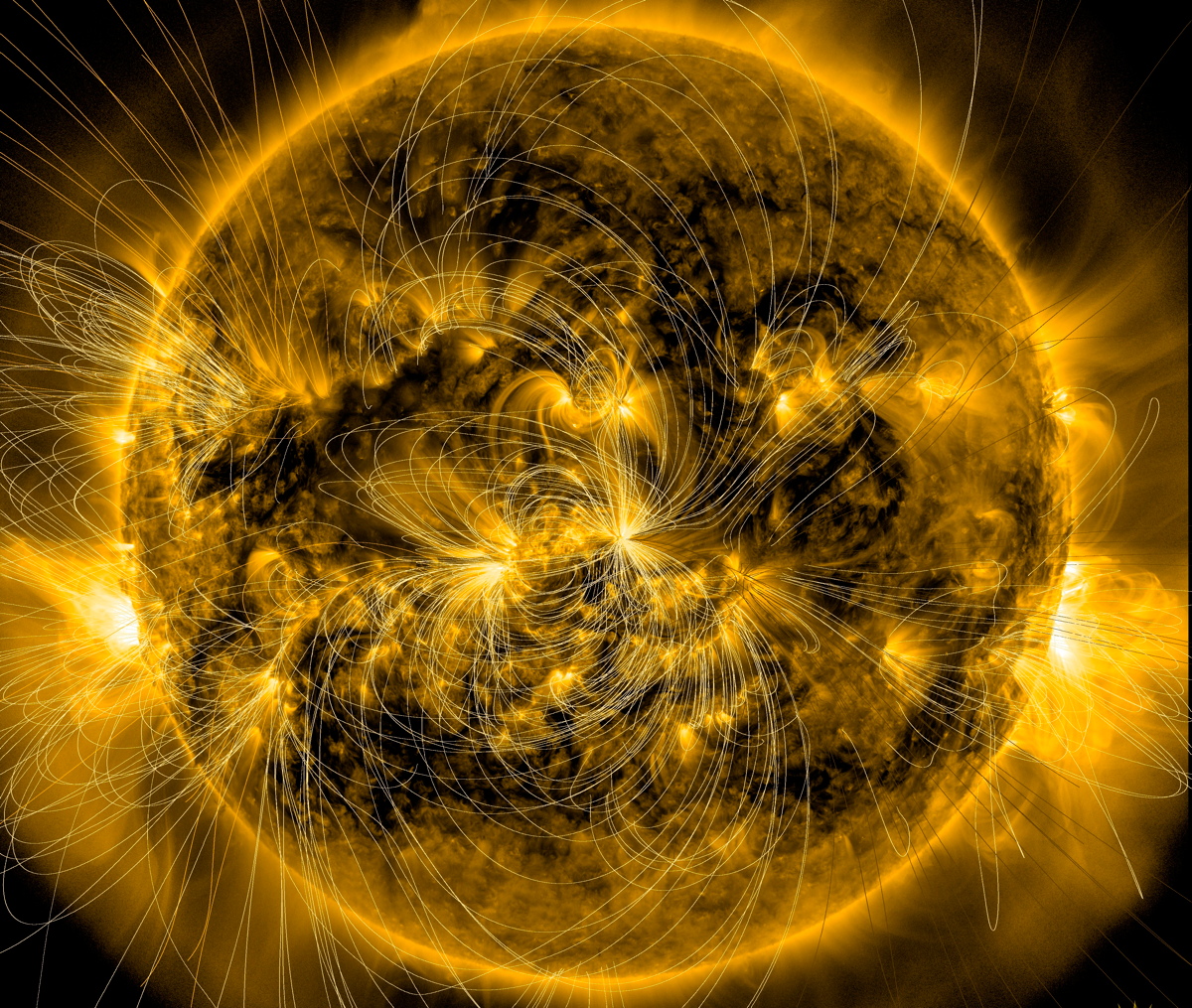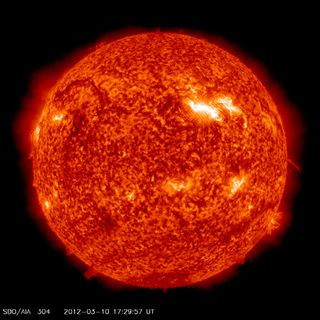New Solar Storm Tool Could Give 24 Hours' Notice of Space Weather

Our sun is an active star, and every so often, it unleashes massive eruptions of solar particles that, when aimed squarely at Earth, can bring power grids, navigation and communication systems to a standstill. Knowing exactly when those sun storms may strike, and how strong they'll be when they do, could give service providers on Earth a chance to prepare.
A new prediction model aims to boost the early-warning time for powerful solar eruptions, called coronal mass ejections (CMEs), to as much as 24 hours — up from the 1-hour notice that current technology allows.
"We don't have a real time method for measuring or modeling this magnetic field more than an hour before a space weather impact," Neel Savani, a space scientist at NASA's Goddard Space Flight Center in Greenbelt, Maryland, who led the research on the new forecasting model, said in a statement. "What we have now is effectively only a 30- to 60-minute heads-up of a CME's configuration before it hits Earth's magnetosphere." [The Worst Solar Storms of All Time]
That configuration of a coronal mass ejection is key, NASA officials explained in the statement. CMEs fire off massive clouds of charged particles at speeds that can range from relatively slow up to a mind-boggling 3,000 miles per second (about 10.8 million mph, or 17.4 km/h). If the CME's magnetic fields are aligned south to north with Earth's magnetic field, the storm will skirt harmlessly by Earth. But if the magnetic fields are arranged in the opposite direction, they can trigger a major space weather event.
The new forecasting model developed by Savani and his team is designed to predict that CME magnetic-field alignment far in advance. The process combines observations of a solar eruption from NASA's powerful Solar Dynamics Observatory, which stares continuously at the sun for signs of flares, with other data on the way the CME clouds move in the aftermath of the eruption.
By merging those data sets, the model is able to predict how the CME cloud will evolve and how the magnetic field will be oriented. That prediction can happen long before the blast hits Earth.

So far, the scientists have tested the model on data from records of eight coronal mass ejections, including a famous false alarm on Jan. 9, 2014, in which an enormous solar eruption's effect on Earth proved very minor. Future testing will help the team refine the model.
Get the Space.com Newsletter
Breaking space news, the latest updates on rocket launches, skywatching events and more!
"We'll test the model against a variety of historical events," Antti Pulkkinen, director of the Space Weather Research Center at NASA Goddard, said in the statement. "We'll also see how well it works on any events we witness over the next year. In the end, we'll be able to provide concrete information about how reliable a prediction tool it is."
The research is detailed in the June 9 edition of the journal Space Weather.
Email Sarah Lewin at slewin@space.com or follow her @SarahExplains. Follow us @Spacedotcom, Facebook and Google+. Original article on Space.com.
Join our Space Forums to keep talking space on the latest missions, night sky and more! And if you have a news tip, correction or comment, let us know at: community@space.com.

Sarah Lewin started writing for Space.com in June of 2015 as a Staff Writer and became Associate Editor in 2019 . Her work has been featured by Scientific American, IEEE Spectrum, Quanta Magazine, Wired, The Scientist, Science Friday and WGBH's Inside NOVA. Sarah has an MA from NYU's Science, Health and Environmental Reporting Program and an AB in mathematics from Brown University. When not writing, reading or thinking about space, Sarah enjoys musical theatre and mathematical papercraft. She is currently Assistant News Editor at Scientific American. You can follow her on Twitter @SarahExplains.